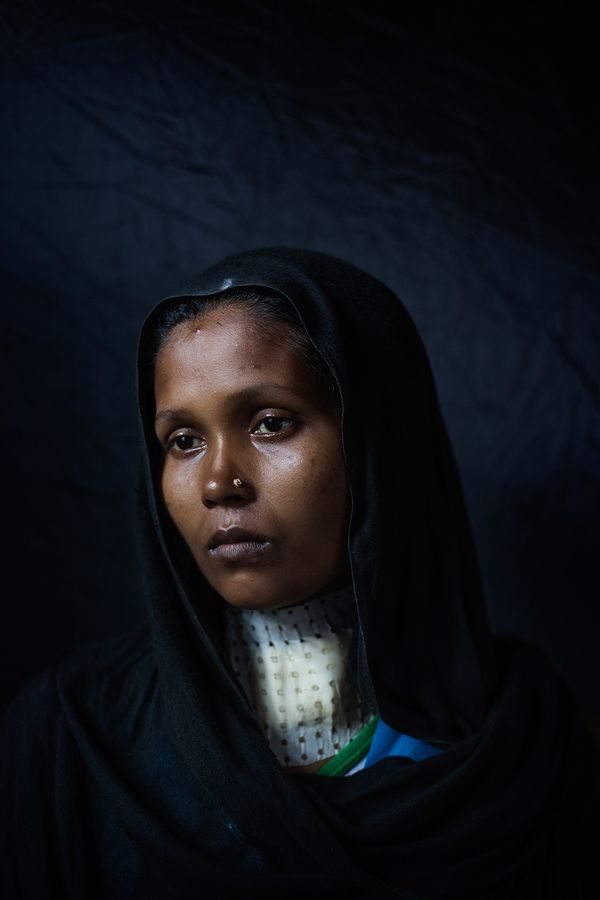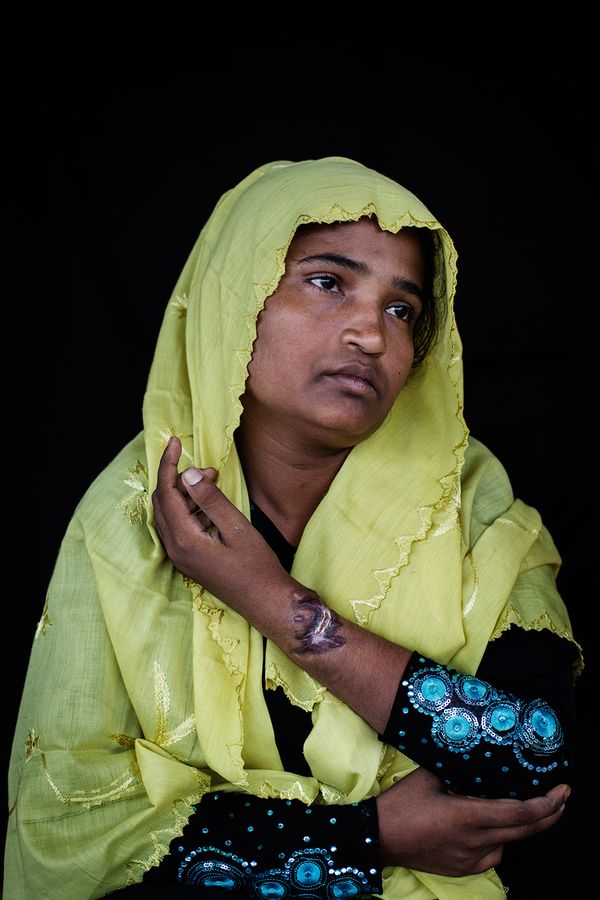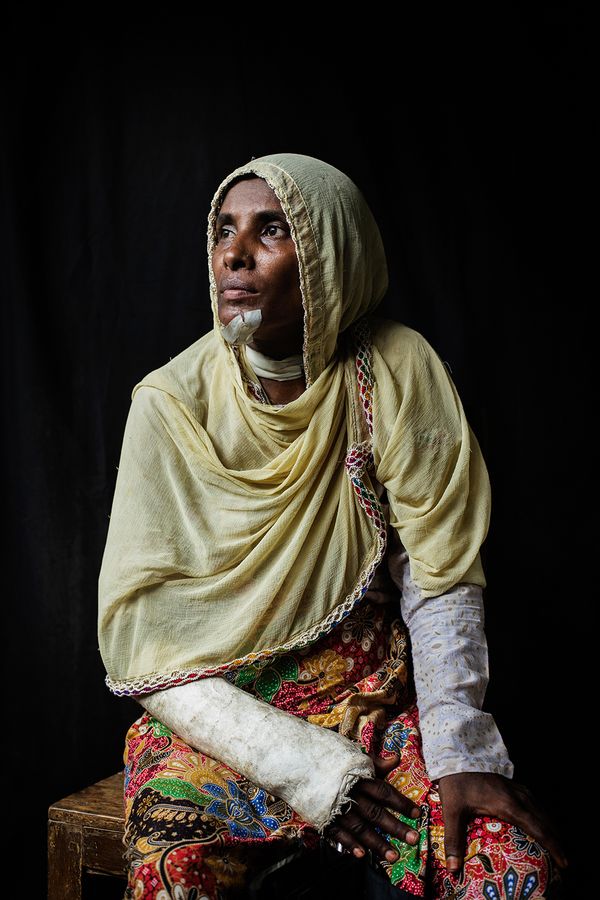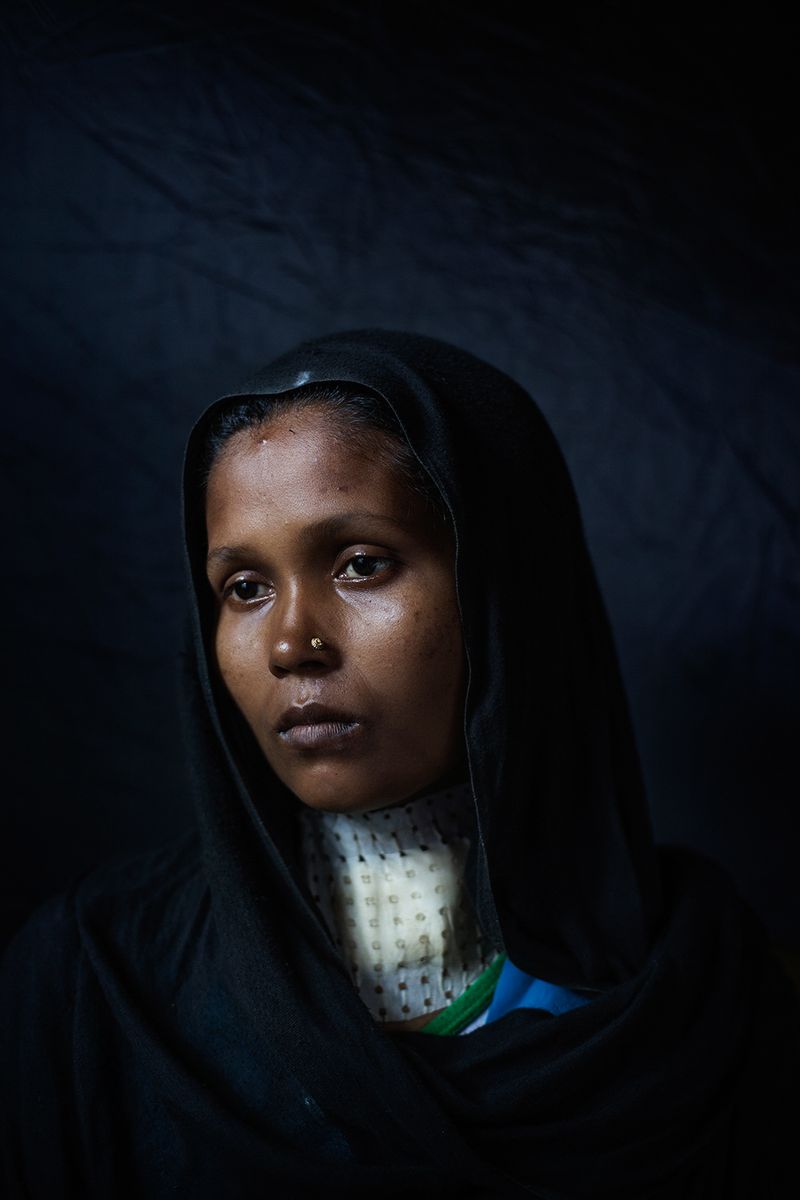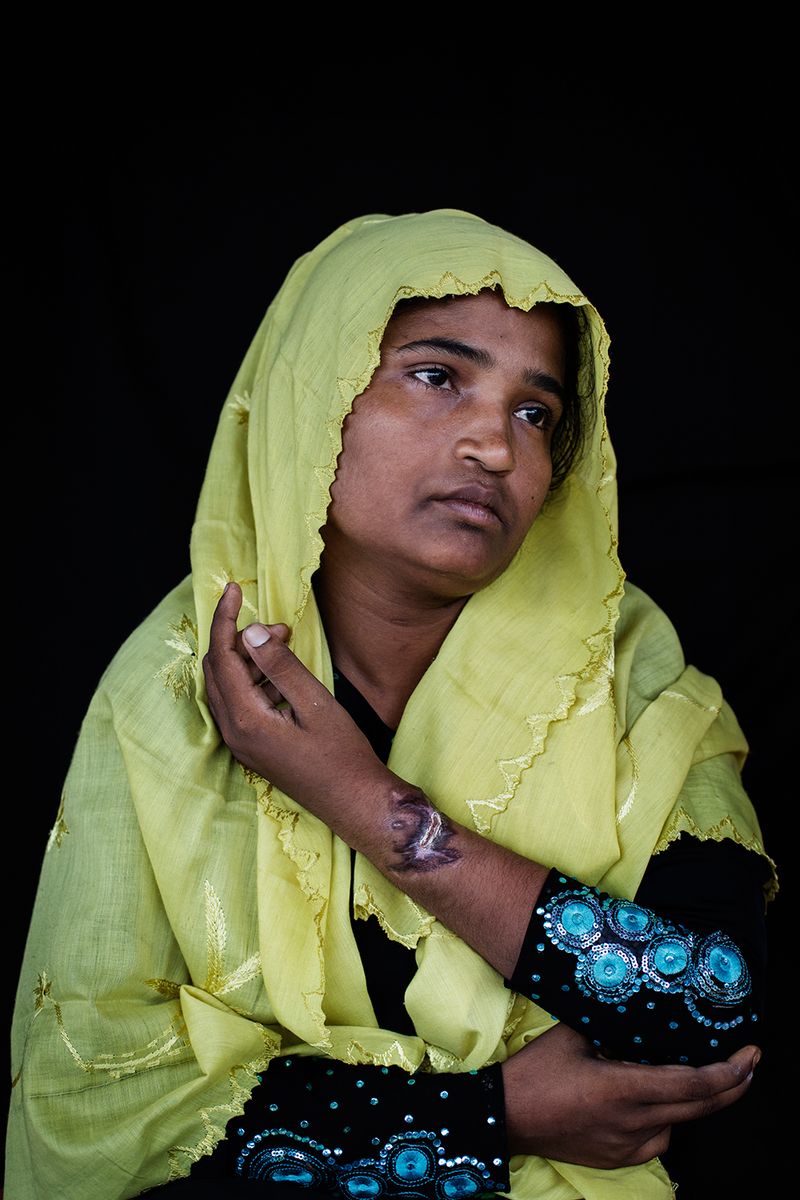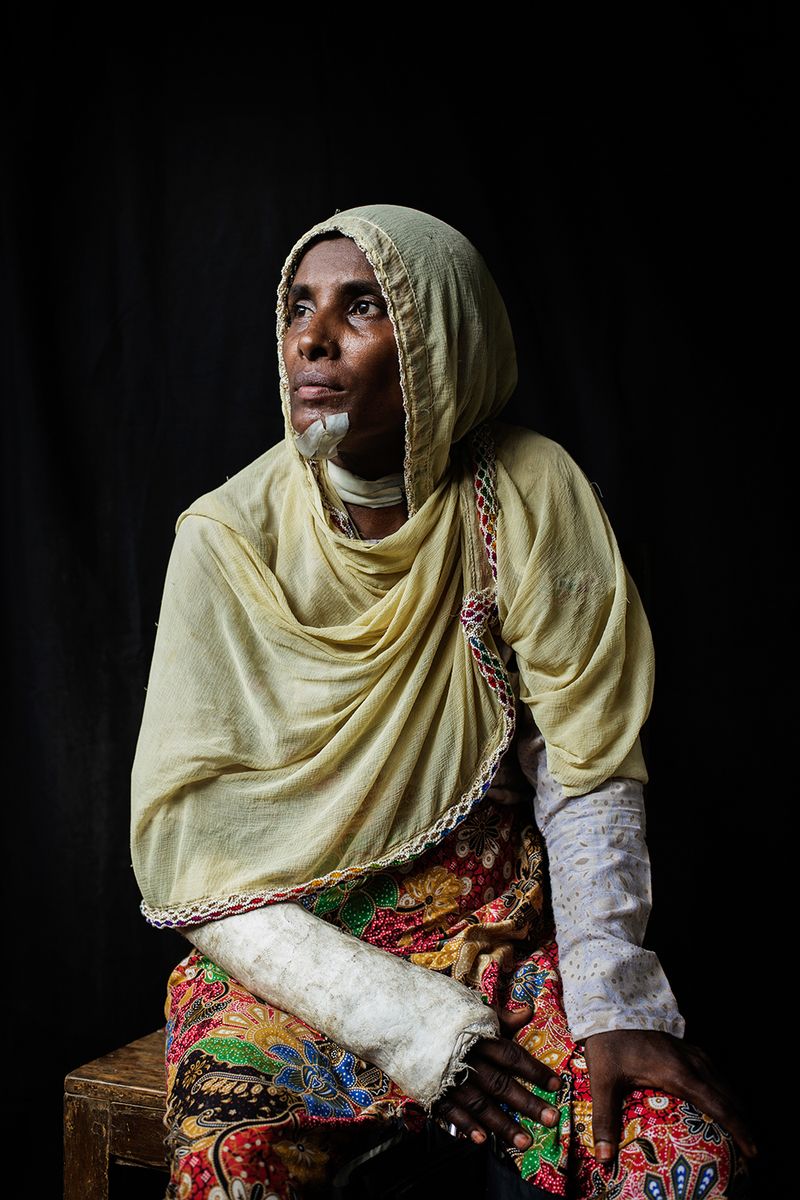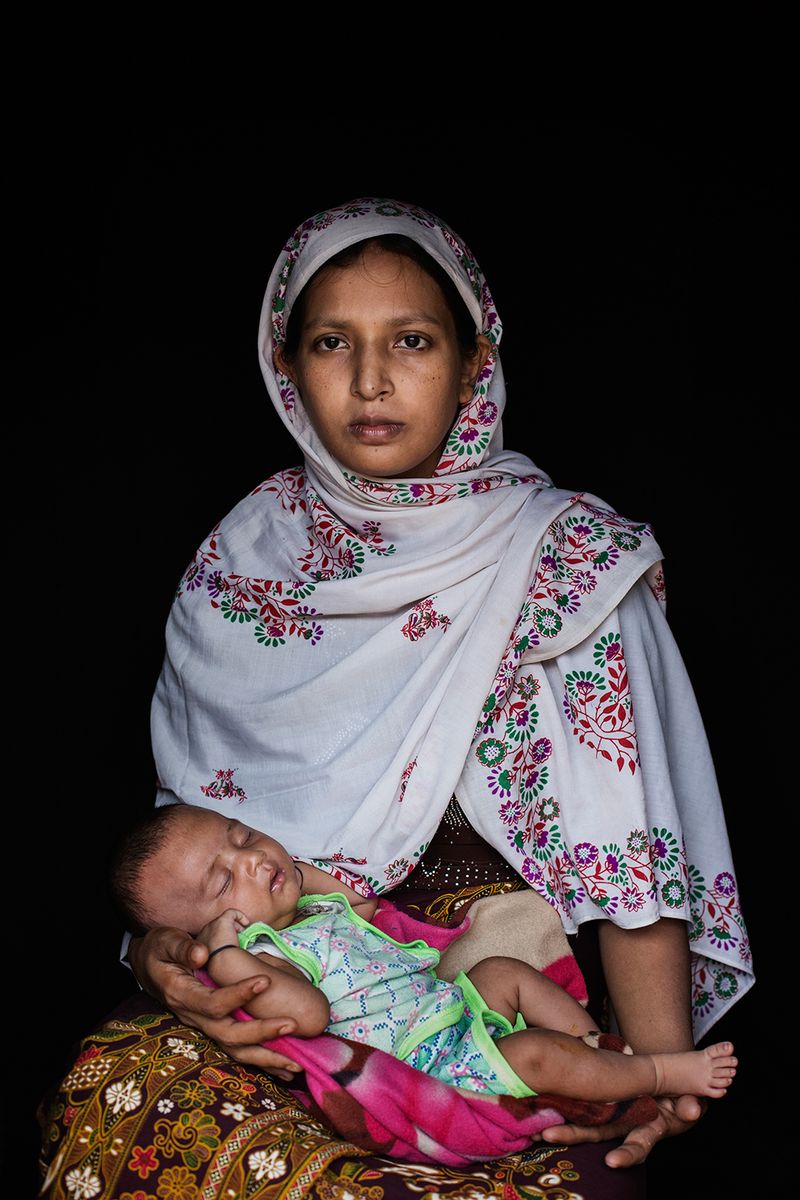Photographing the Rohingya Refugees Exiled in Bangladesh
-
Published9 May 2018
-
Author
In her recent series commissioned by Human Rights Watch, British-Swedish photographer Anastasia Taylor-Lind presents a collection of painterly like portraits that depict the survivors of the Rohingya crisis in Myanmar.
In her recent series commissioned by Human Rights Watch, British-Swedish photographer Anastasia Taylor-Lind presents a collection of painterly like portraits that depict the survivors of the Rohingya crisis in Myanmar.
The Burmese security forces have long been committing crimes against Myanmar’s Rohingya Muslim population, including forced deportation, murder, rape, and persecution, all resulting in countless deaths and mass displacement. Rohingya Massacre Survivors is Anastasia Taylor-Lind’s latest photographic project, comprising a collection of portraits of survivors who are now refugees in neighbouring Bangladesh.
As a photographic storyteller, Taylor-Lind focuses on long-form narrative reportage. We saw a break in her photographic career when she dedicated herself to research for a few years, first as a Harvard Nieman Fellow in 2016, and later in 2017, as a Logan Fellow at The Carey Institute for Global Good, where she started writing a book about the visual representation of contemporary warfare and the photojournalists who cover it.
The invitation to photograph in Bangladesh came from Peter Bouckaert, the Emergencies Director at Human Rights Watch. Taylor-Lind describes how she felt this was the right time to return to the medium: "Me and my brother had just buried our father in the fields where we had grown-up in England. We used our father’s tools to bury him in the ground. I was going to bed feeling how every muscle in my body ached. The season for living inside my head, researching and writing, it felt as if it was over for me - I felt like I just needed to be out facing the world again and being with people. I told Peter to take me with him and his team to Bangladesh. I knew this commission was for me."
Taylor-Lind has been working with the subject of women throughout her photographic career, and portraiture has been a leading signature across her work, with previous projects including Maidan, Portraits from the Black Square, a series portraying anti-government protesters and mourners made in a studio in Maidan Nezalezhnosti (Independence Square) in Kiev, and Women of the Cossack Resurgence, a documentary essay exploring the Cossack resurrection in Caucasus Russia and Crimean Ukraine.
With Rohingya Massacre Survivors, however, Taylor-Lind covered other aspects of the field in a more reportage-based style for the investigative usage of the Human Rights Watch team. "It was my collaboration with Peter Bouckaert that produced this series of more formal portraits" she explains. "I photographed men, women and children in this makeshift portrait studio, but the series of pictures that I feel connected with the most are the portraits of women who survived several large-scale massacres that the Human Rights Watch were investigating."
It is clear that the British-Swedish photographer has a great interest in recording the assaults that perpetuate women in different locations across the world. She always seems to be able to find the strength that women survivors hold on to. Her photographs depict a toughness and resilience, as well as a solemn dignity. "I don’t really know what to say other than that I am a woman too, so I feel more connected and more comfortable in the company of other women, certainly in situations of extreme violence" Taylor-Lind shares.
This series could almost be framed as a work of visual advocacy, as opposed to photojournalism, although, she does not quite share the same sentiments: "I don’t think working for an NGO made me photograph people any differently - the way I moved through the spaces was the same as I usually do, except in this case I was given more time with each person, because the interviews that the Human Rights Watch conduct with massacre survivors are exceptionally in depth, much more than any other journalistic interview would be" Taylor-Lind says. "Simply put, the existence of photography doesn’t change anything. The advocacy happens when an organisation or individual take a photograph and use that photograph as advocacy."
The Rohingya Crisis much like the events in Maidan Square in Ukraine, both of which Taylor-Lind photographed with almost similar approaches, were widely covered by the international media. Yet, in both instances, her photographs were markedly different from the work of other photographers due to her straightforward approach to her portraits in front of a black background.
"Again, it was the presence of so many of my photographic colleagues photographing the same issue, place and people that informed my decision to move away from traditional reportage" she says. "I still see my pictures as photojournalism, it’s all grounded on journalism - including my postcard project in Ukraine. Photography is one way of telling a story, and it can’t be one full truth in one approach."
--------------
Anastasia Taylor-Lind is a documentary photographer based in London. Her editorial clients include National Geographic Magazine, Marie Claire, The Sunday Times Magazine, Time, and The New York Times, among others. Follow her on PHmuseum, Twitter and Instagram.
Verónica Sanchis Bencomo is a Venezuelan photographer and curator based in Hong Kong. In 2014, she founded Foto Féminas, a platform that promotes the works of female Latin American and Caribbean photographers. Follow her on Twitter and Instagram.
